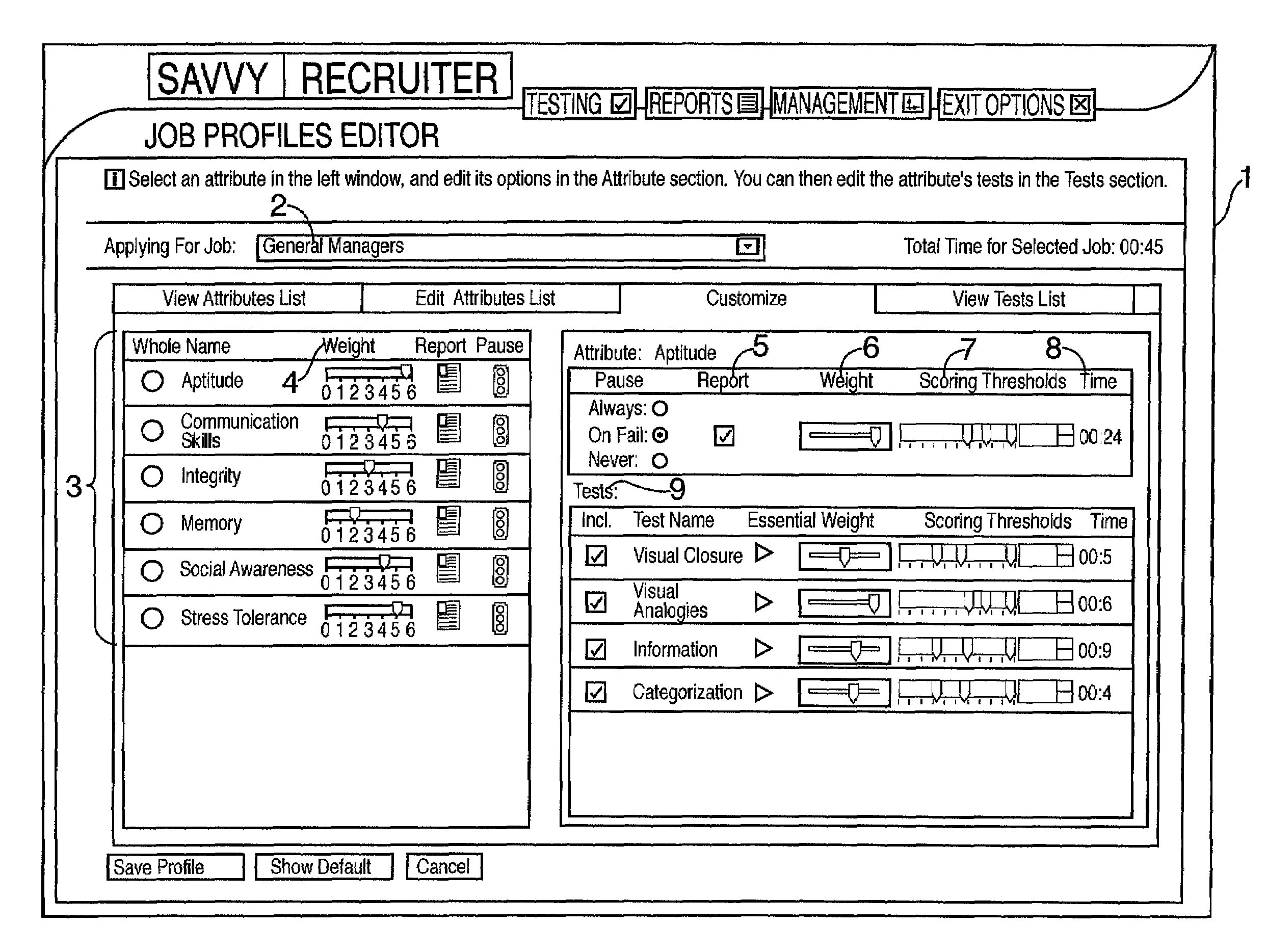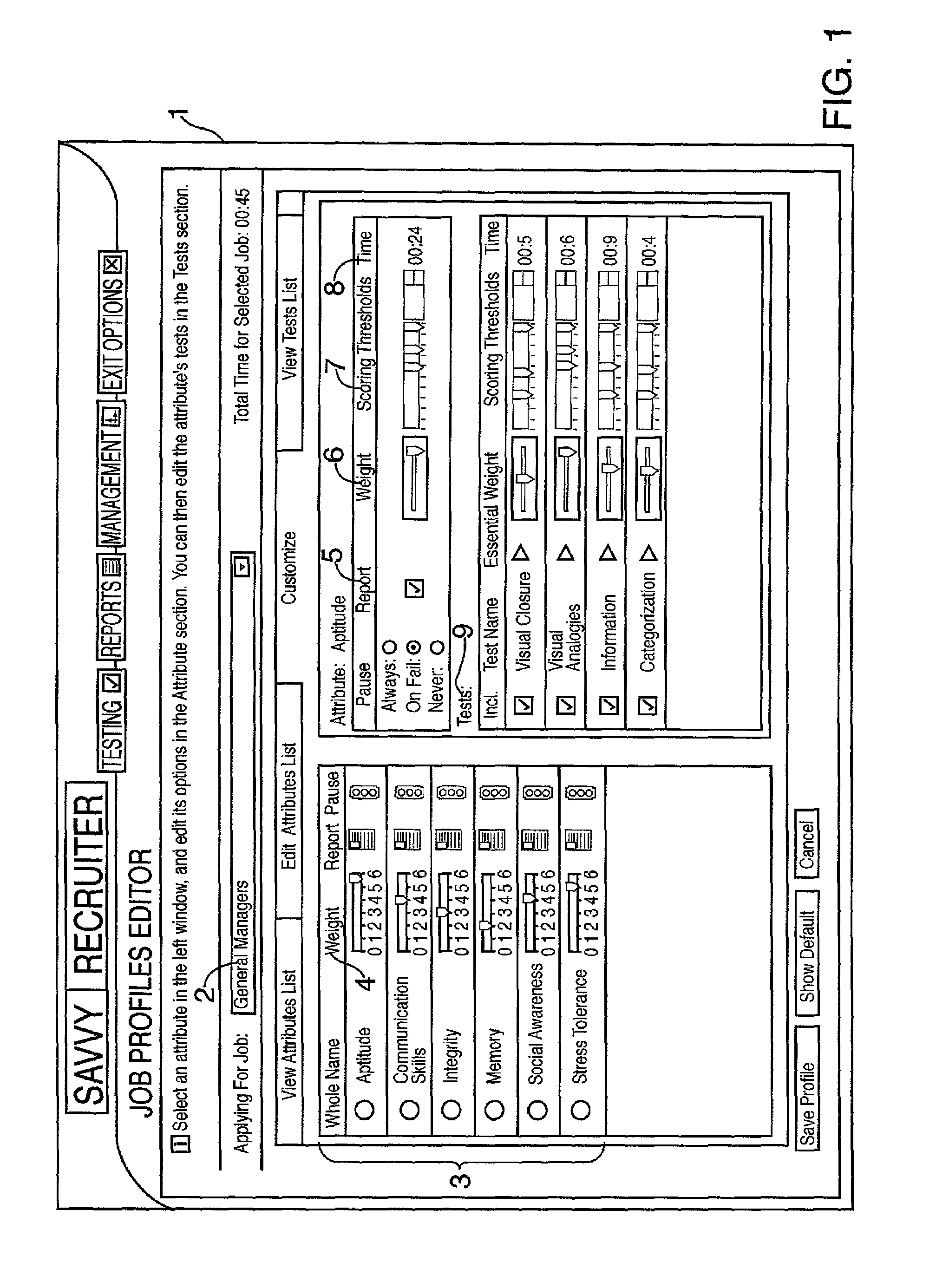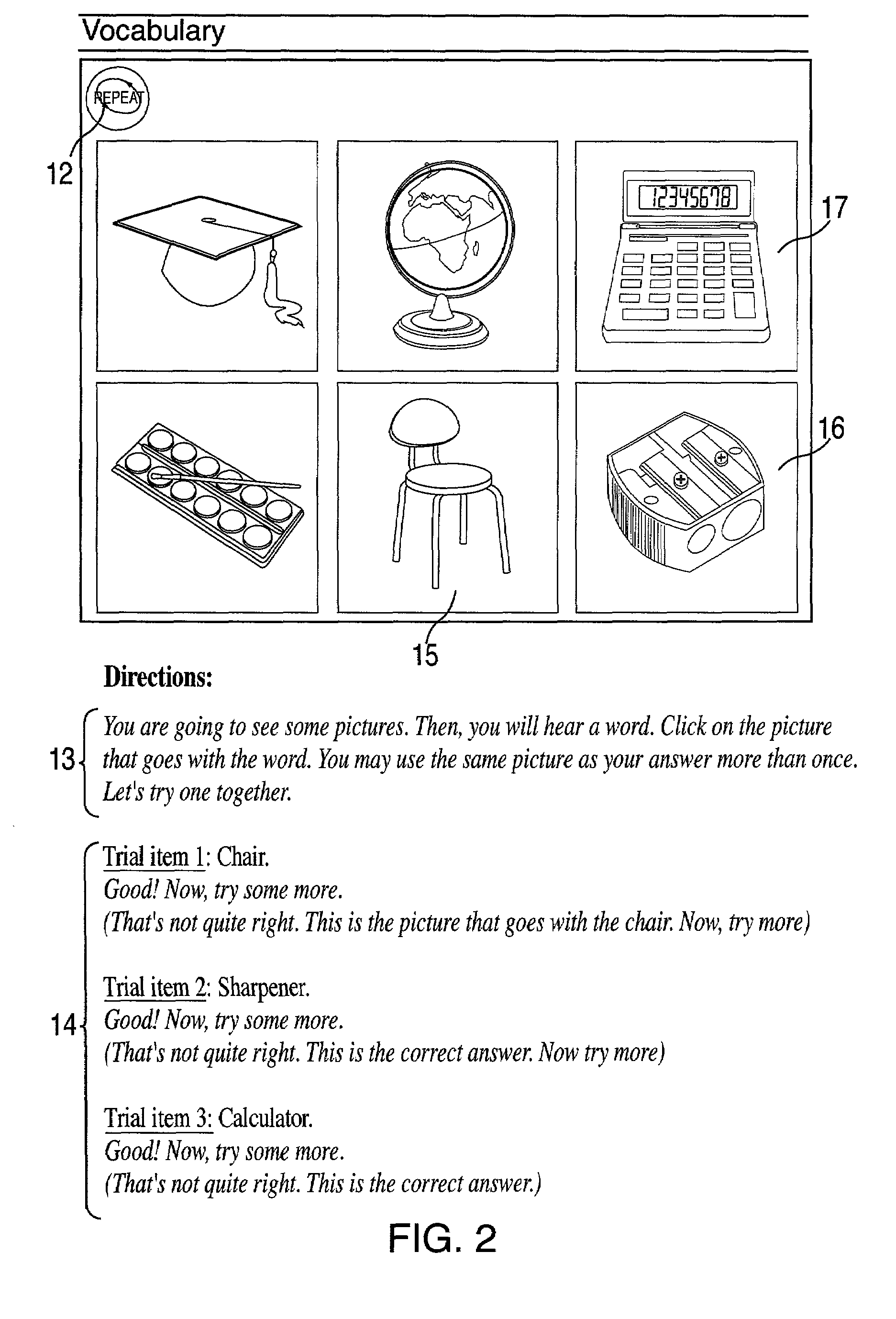Application of multi-media technology to computer administered vocational personnel assessment
a multi-media technology and vocational assessment technology, applied in the field of interactive multimedia applications in vocational assessment psychological testing, can solve the problems of not being able to answer truthfully questions that take longer to answer and exhibit more response time latency variability, and achieve short time limits for test segments, avoid bias, and rapid and precise indication
- Summary
- Abstract
- Description
- Claims
- Application Information
AI Technical Summary
Benefits of technology
Problems solved by technology
Method used
Image
Examples
Embodiment Construction
[0130]When used for pre-employment screening of individuals, the testing system of this invention presents an initial menu screen 1 to the test administrator as shown in FIG. 1. The name “SAVVY RECRUITER” indicates a trade name of Applicant. Menu screen 1 is identified with a specific job title 2, which is a “general manager” for this example. The job attributes 3 are presented in a column format to the left and their applicability to this specific job title 2 is presented in “weight”4 column to the immediate right. A job attribute 3 such as “Aptitude” is weighted as being more relevant than “Memory” for the job title 2 of general manager.
[0131]For a specific job attribute 3, such as “Aptitude”, a report may be generated by clicking on an option 5 for a report and option 6 for display of relevant test weight. In addition, scoring threshold 7 may be displayed to indicate the desirability of the applicant for a particular position such as job title 2. Time column 8 presents an estimat...
PUM
 Login to View More
Login to View More Abstract
Description
Claims
Application Information
 Login to View More
Login to View More - R&D
- Intellectual Property
- Life Sciences
- Materials
- Tech Scout
- Unparalleled Data Quality
- Higher Quality Content
- 60% Fewer Hallucinations
Browse by: Latest US Patents, China's latest patents, Technical Efficacy Thesaurus, Application Domain, Technology Topic, Popular Technical Reports.
© 2025 PatSnap. All rights reserved.Legal|Privacy policy|Modern Slavery Act Transparency Statement|Sitemap|About US| Contact US: help@patsnap.com



